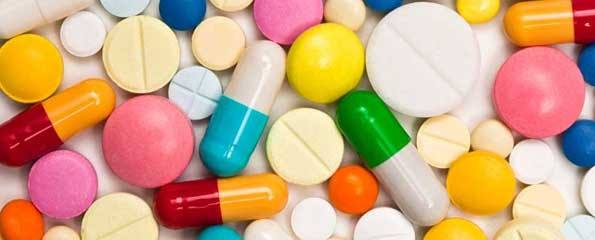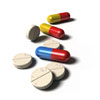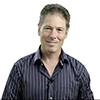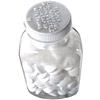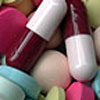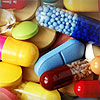Drugs: An Overview
- What is a drug and how are they developed?
- Generic vs branded drugs
- Video: Pharmaceutical benefits scheme (PBS)
- Counterfeit drugs
- Counterfeit ED drugs
- Drug schedules
- Pregnancy categories
- Drugs page /supplements page
- Classes of drugs (listed in alphabetical order)
What is a drug and how are they developed?
| The study of drugs or chemicals and the effects they have on living animals is called pharmacology. Pharmacology explains what drugs are, what they do to body functions and what the body does to them. Pharmacology also explains why a person may experience side effects when they take drugs and why there is such a wide spectrum of differences between drug actions in different people. |
For more information, see What Are Drugs? (Introduction to Pharmacology)
Generic vs branded drugs
| A branded drug is the original product that has undergone and passed rigorous tests and evaluations involved in developing a pharmaceutical product. A generic drug is a copy of the original branded product that can be produced when the patent for the original product has run out. The active ingredient remains the same, but the inactive ingredients are slightly different. |
For more information, see Generic and Branded Medication: Similarities and Differences
Video: Pharmaceutical benefits scheme (PBS)
| The Pharmaceutical Benefits Scheme (PBS) is the Australian Government’s program for subsidising life-saving medications and making them available to the public at a reduced cost. Dr Joe Kosterich discusses how the PBS works in this video. |
For more information, see Pharmaceutical benefits scheme (PBS)
Counterfeit drugs
| Counterfeit drugs are fake medicines, or medicines which have been manufactured or packaged fraudulently. They do not meet quality standards, are not approved by health authorities, and their sale is illegal in many parts of the world, including Australia. |
For more information, see Counterfeit Drugs.
Counterfeit ED drugs
| Counterfeit erectile dysfunction (ED) drugs are fraudulent or fake medications marketed and/or sold to treat erectile dysfunction. Like other counterfeit medicines, they may differ from genuine medications in many ways. |
For more information, see Counterfeit ED Drugs.
Drug schedules
| The Standard for the Uniform Scheduling of Drugs and Poisons, abbreviated SUSDP, is a document used in the regulation of drugs and poisons in Australia. There are 8 schedules included in the SUSDP including pharmacy medicines, pharmacist only medicines, prescription only medicines, caution, poison, dangerous poison, controlled drug and prohibited substance. |
For more information, see Drug Scheduling
Pregnancy categories
| The pregnancy category of a drug is an assessment of the risk of injury to the foetus if the drug is used as directed by the mother during pregnancy. Categories range from A, which are drugs that have been observed to be relatively safe to Category X which have such a high risk of causing permanent damage to the foetus that they should not be used in pregnancy or when there is a possibility of pregnancy. |
For more information, see Pregnancy Drug Categories
Drugs/supplements page
| A drug is a chemical substance that is used treat or prevent diseases. Examples are medications that are prescribed to you by your doctor when you are ill and can only be supplied by a chemist. Supplements are substances found naturally in your diet that are used to enhance or enrich your nutritional status. Examples include vitamins and minerals. |
For more information, see Drugs and Supplements
Classes of drugs (listed in alphabetical order)
| A drug may be classified by the chemical type of the active ingredient or by the way it is used to treat a particular condition. |
For more information, see Medications
Dates
Created by:

 Login
Login